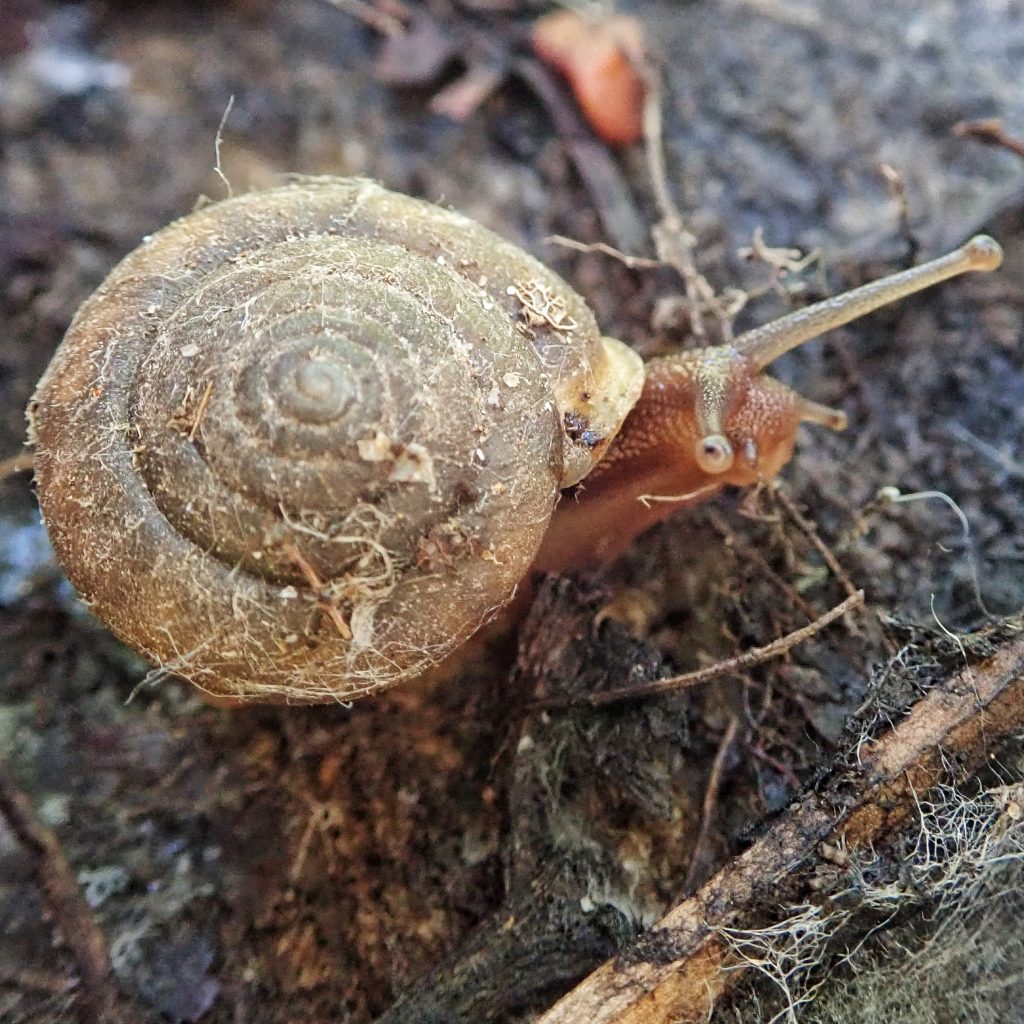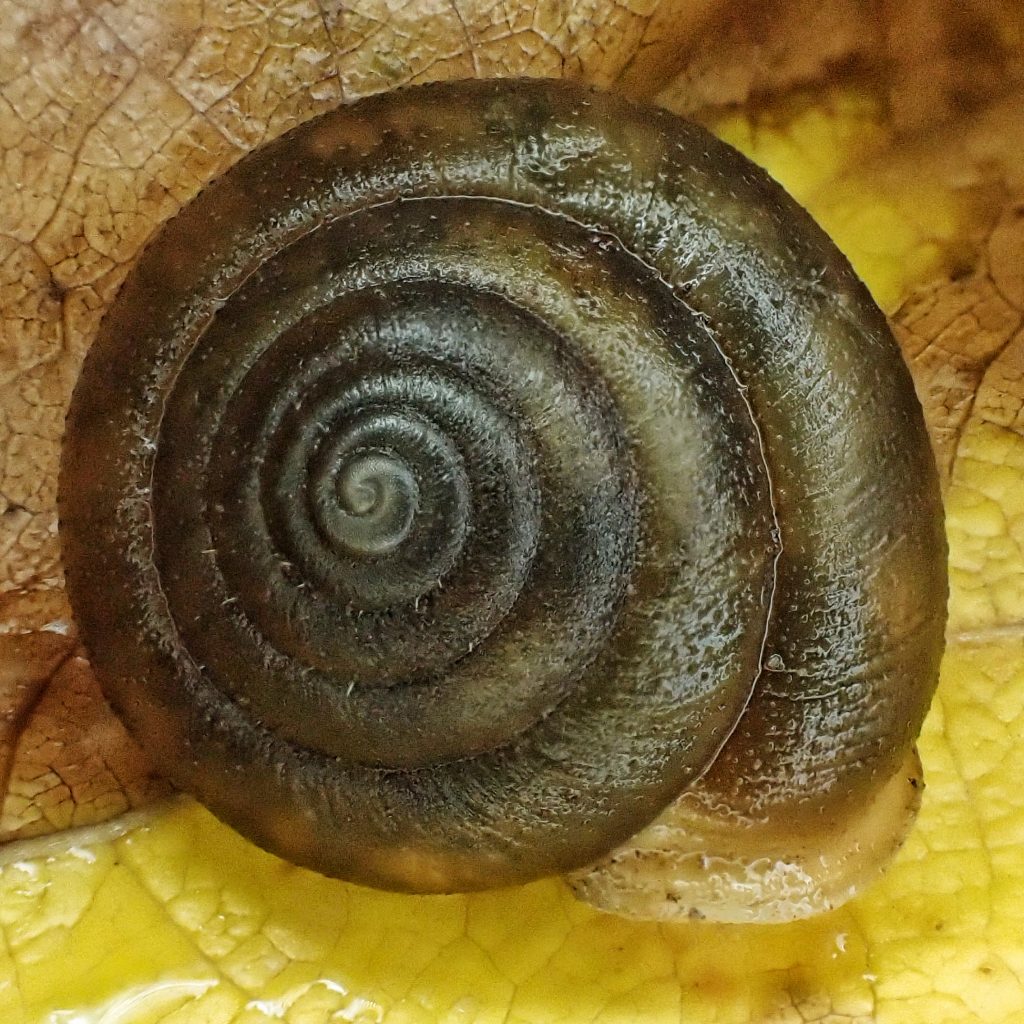
As if snail identification wasn’t difficult enough, the taxonomy of Vespericola (family Polygyridae) is somewhat up in the air, with several subspecies possibly headed for full species status. But this specimen appears to be V. c. ssp. columbianus, due to the lack of dense periostracal (on the shell) hairs, and that subspecies probably will not change. Populations of V. pilosus (formerly V. c. pilosa) along the central California coast have already been determined to be a separate species, which casts doubt on the status of the more northerly specimens which had been called V. c. pilosa.
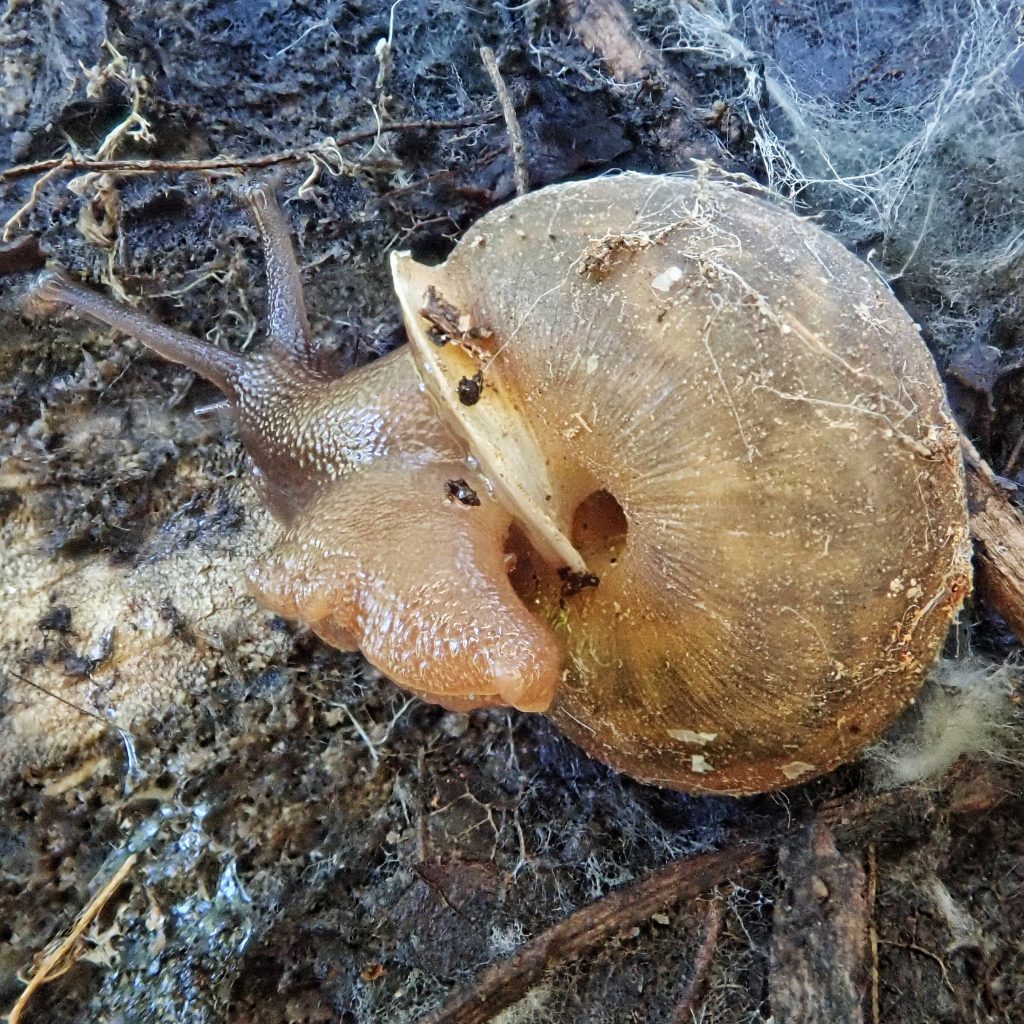
I really enjoy finding snails. There is something intrinsically cool about their shells and the shelter they provide. Sometimes I stumble upon them just walking in the woods on rainy days, where I find the occasional specimen on a trail or tree trunk. I have heard of people going snail hunting at night with a headlamp, and I am going to do that some time. But most of the snails I find, as was true with this one, are encountered whilst searching for arthropods, digging through leaf litter or looking under logs.
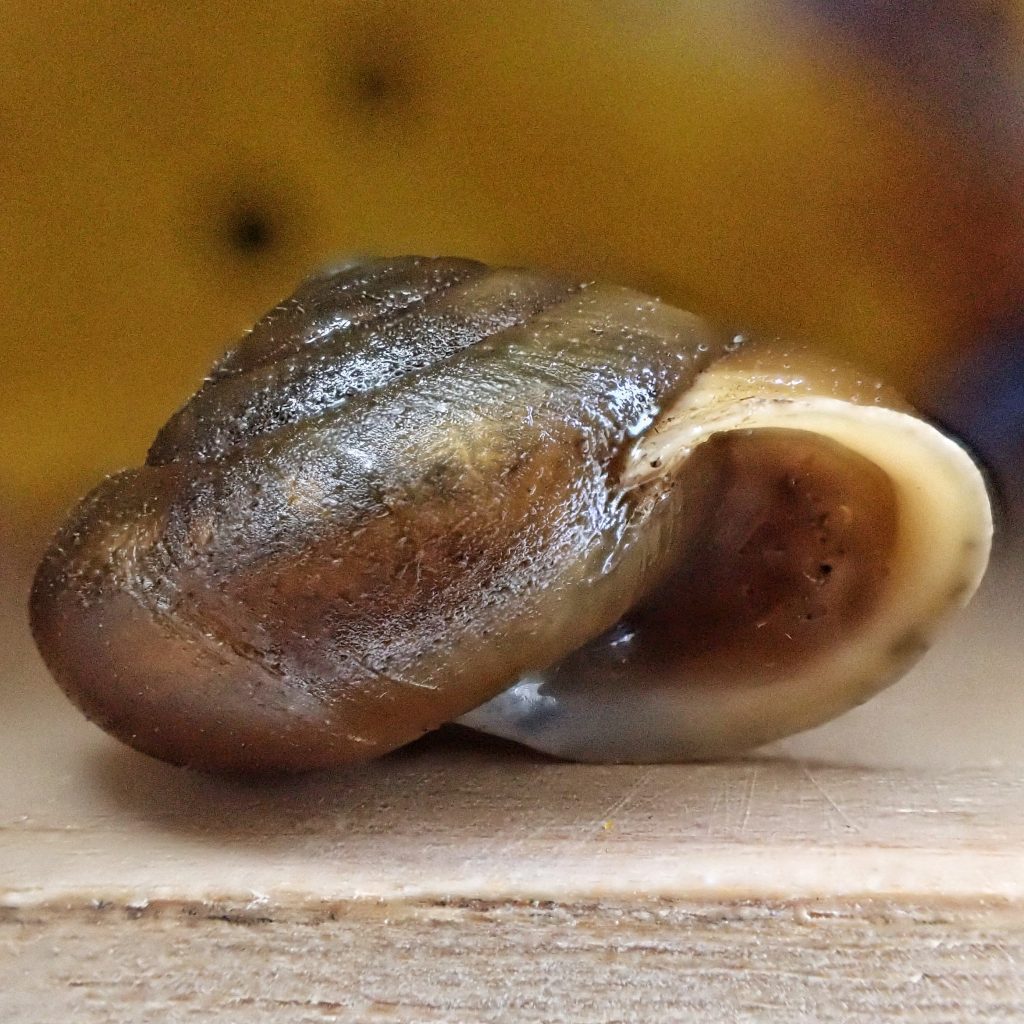
Description-Medium sized (13.5-16mm wide X 9.3-11mm high) yellowish brown to brown snail with fairly tight whorls that expand in the last 1/5 of the last whorl, and then moderately constrict before the white lip reflection; periostracal hairs mostly absent in adults, although root scars or scattered hairs may remain; aperture is auriculate (ear shaped) to oval, and lacks interior teeth; umbilicus is perforate and narrow, and only slightly covered by the reflected lip, which extends past it.
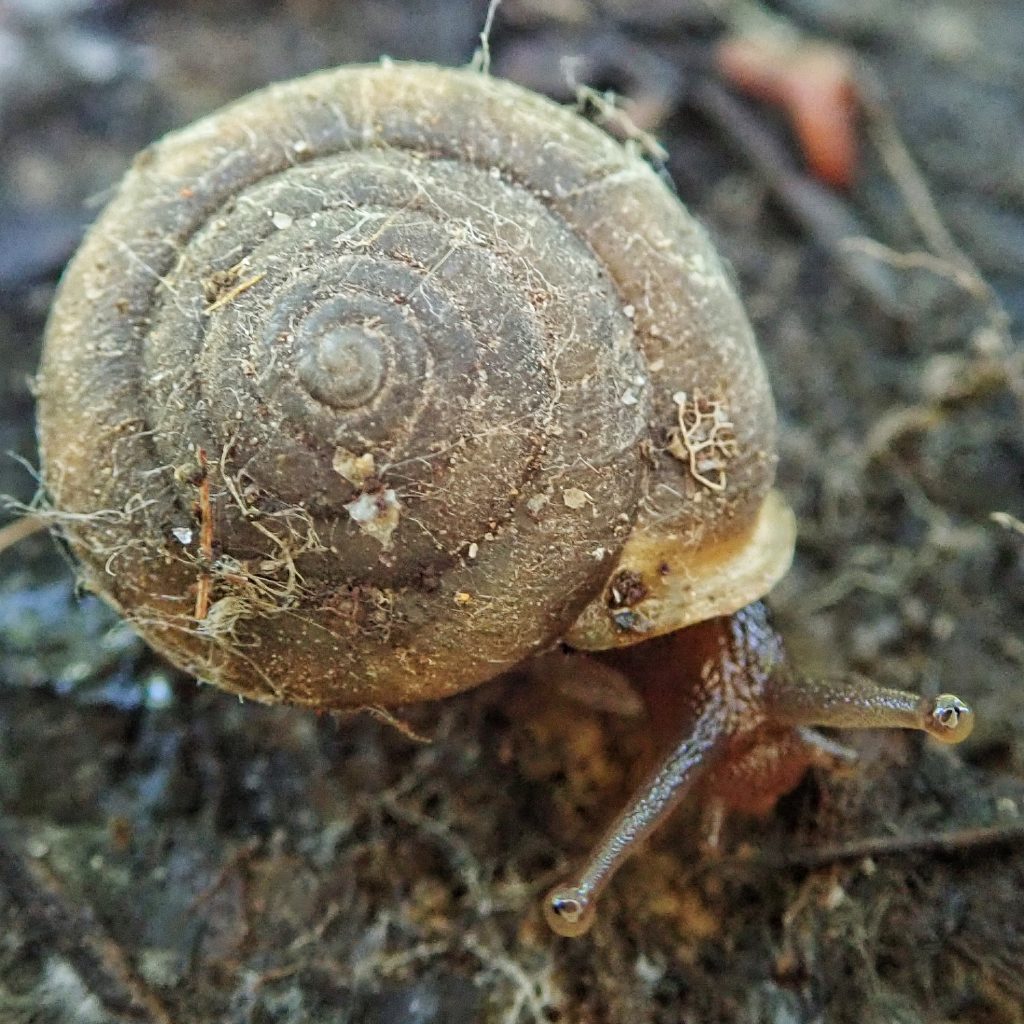
Similar species-Any or all of these subspecies will likely achieve full species status; V. c. depressus has fine periostracal hairs and a somewhat lower spire; V. c. latilabrum has a much higher spire and thick periostracal hairs; V. c. ssp. (formerly pilosa) has a somewhathigher spire and dense, thick periostracal hairs; V. eritrichius, V. euthales, and V. megasoma are darker, with periostracal hairs, and are found only in sw Oregon and nw California; Hochbegellus sp. cannot be distinguished from Vespericola sp. except by internal dissection, but occurs only in coastal sw Oregon and ne California; Cryptomastix germana is much smaller (max size 8.5mm wide) and has scattered long periostracal hairs.
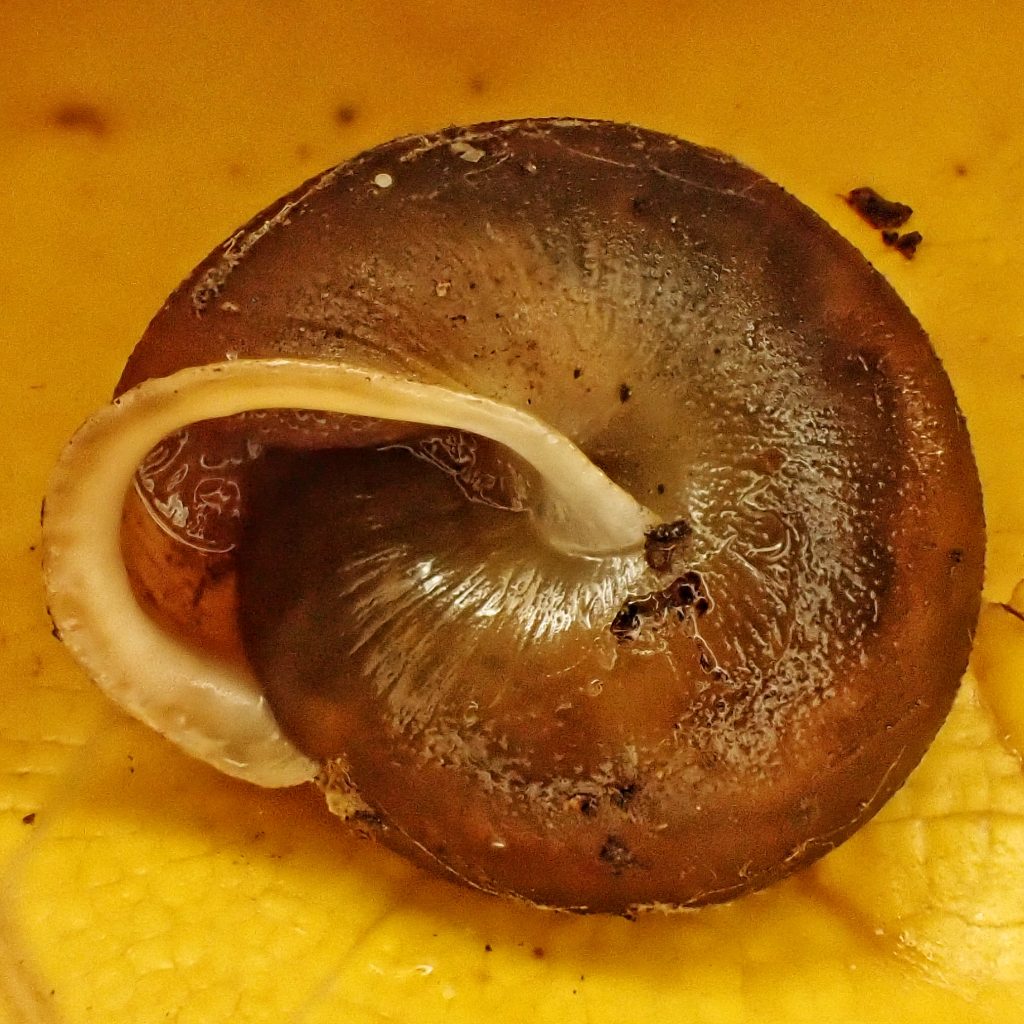
Habitat-Forests and wooded areas, usually under logs, bark (where you can often see their feeding trails), woody debris, and leaf litter.
Range– Depending on the taxonomic fallout V. columbianus may be found throughout northwestern North America; this subspecies is found along both sides of the lower Columbia River and north into western Washington and BC.
Eats-Decaying organic matter, fungi and lichens, yeast, bacteria, diatoms,protonema of mosses, and occasionally living leaf material; not considered to be garden pests.
Eaten by-Birds, small mammals, and Scaphinotus beetles.
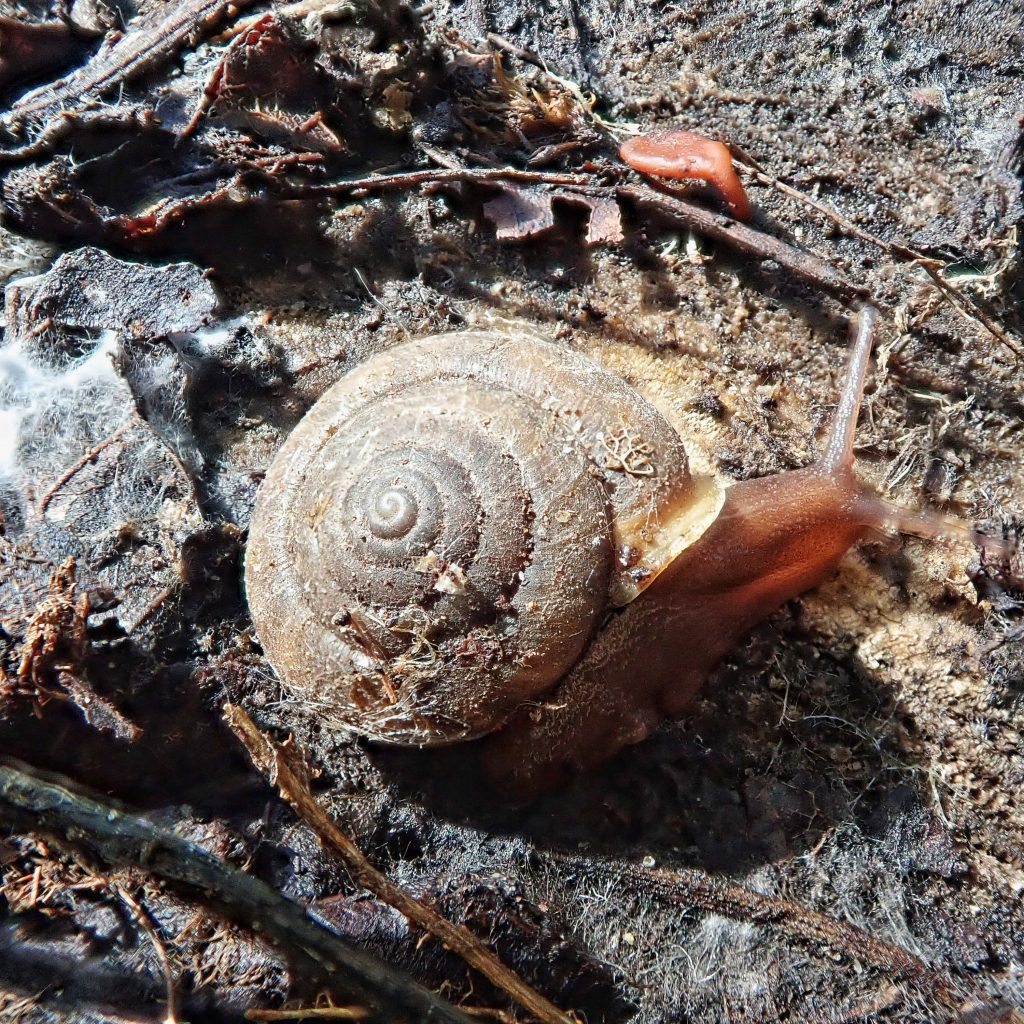
Adults active-Year around, but deep under cover in the coldest or driest times.
Life cycle-Presumably lays eggs under moist, cool cover; undergoes the veliger larval stage while still in the egg, and emerges from it as a fully formed juvenile snail; probably only breeds once in its lifetime, usually in the second year, and may live 3-5 years.
Etymology of names–Vespericola is from the Latin words for ‘dwelling in the west’, a reference to the strictly western range of this genus. The specific epithet columbianus refers to the type specimen being found near the lower Columbia River, probably near present day Vancouver, Washington.
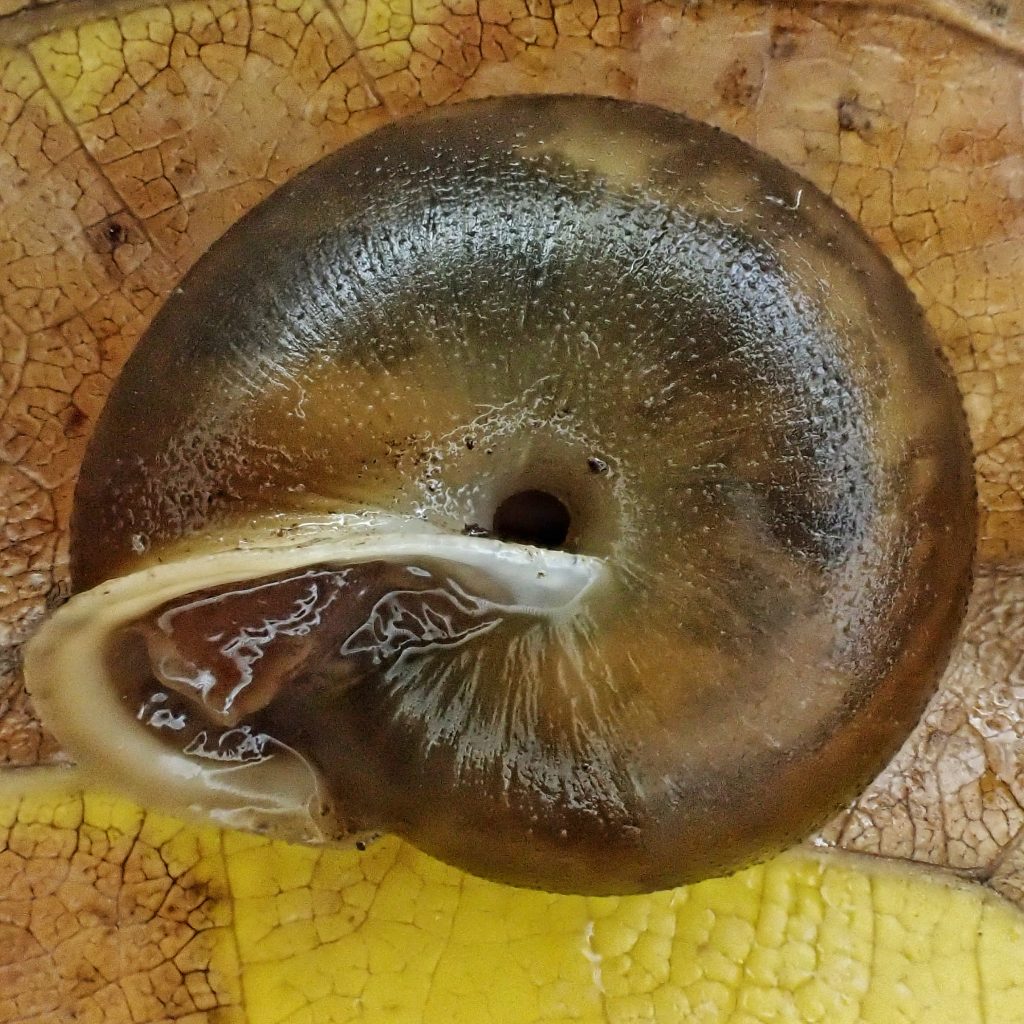
https://www.centralcoastbiodiversity.org/northwest-hesperian-bull-vespericola-columbianus.html
https://www.fs.fed.us/r6/sfpnw/issssp/documents2/sfs-ig-vespericola-n-sp-bald-hesperian-2013-04.doc
http://linnet.geog.ubc.ca/efauna/Atlas/Atlas.aspx?sciname=Vespericola%20columbianus
